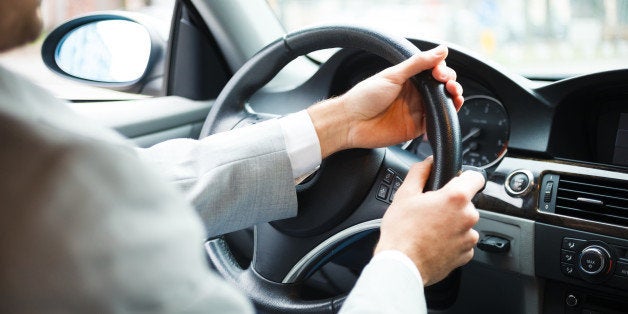
When shopping for a car, just how important is the test drive? Let's say you're trading in your old Tercel for new Toyota Camry. The new car will be a lot better, right? Probably. But when you do take your test drive, there are a few specific things you should be looking, listening and sniffing for. Yes, sniffing.
1.For a New Car: Take Two Test Drives.
Most people don't know this, but when shopping for a new car, you're actually going to take two test drives of the same model before you buy. Here's why: The first car you test drive is likely a demonstrator model the dealership uses to let all prospective buyers get a feel for that specific model. Most likely, this initial test drive is NOT the exact car you will take home, just a similar model.
This initial drive will give you insight into things like outward visibility, ride and handling, seating position, noise, cargo space and passenger space. But if you decide that's the right car for you, be sure to take a second test drive in the actual car you're going to buy. On the second test drive, you're looking for small flaws, say rips in the seats or odd noises that could indicate quality problems with the one car you're going to buy.
Most new cars are well-built and trouble-free, but new cars can have problems. Taking that second test drive in the exact car you're going to buy can prevent you from getting stuck with a lemon. Be sure to take this second test drive before you legally "take delivery" of the vehicle. Taking delivery generally means driving it on a public street once it's registered to you.
Also keep in mind that same car with a different engine or interior will behave much differently. Test driving the actual car you're going to buy will help you determine if you chose the right interior trim, options and engine and transmission combination before it's too late.
2.For a Used Car: Look and Listen.
The purpose of your test drive is to insure that the car appears to be mechanically sound. But, of course, the test drive should never be a substitute for having a mechanic inspect the car before you buy.
Listen for any odd sounds and feels. Make sure you let the car get up to its normal operating temperature by driving or letting it idle for about 15 minutes. Test driving a cold car may mask some symptoms of an engine or transmission problem.
3.For a Used Car: Do a Sniff Test.
The smell of eggs can indicate a problem with the exhaust system. The smell of gasoline may indicate a problem with the fuel tank or fuel delivery system. A burning smell may mean a problem with the cooling system or a car that burns oil. Also check for white or blue smoke coming from the tailpipe. Smoke might mean a problem with the internal parts of the engine.
See if there are excessive air fresheners inside the car -- this might be a hint that there's a problem. It might be that the previous owner had a pet, which wouldn't hurt the way the car works, but it's certainly irritating. Cars that have been flooded may have a moldy or sour smell, and using store-bought air fresheners is an inexpensive way to mask that.
Whether new or used, be sure to test out all the electronics and accessories. Run the fan, the heater, the air conditioner and all gadgets like the radio, navigation system and parking cameras. Be sure all the power accessories work like the seats, windows, sunroof, mirrors and power lift gate.
4.No Matter What: Choose Your Course.
Be sure to take your test drive on roads you're actually familiar with, and don't let the salesperson choose your route or duration. Drive for long enough that you can judge seat comfort and access to all the controls. Also, make sure to drive in a variety of real-world situations including rough roads, highway and city driving.
Test driving every single car you're considering may be time consuming, but if you go in with a few specific goals in mind, the test drive can end up saving you time and money down the road.
